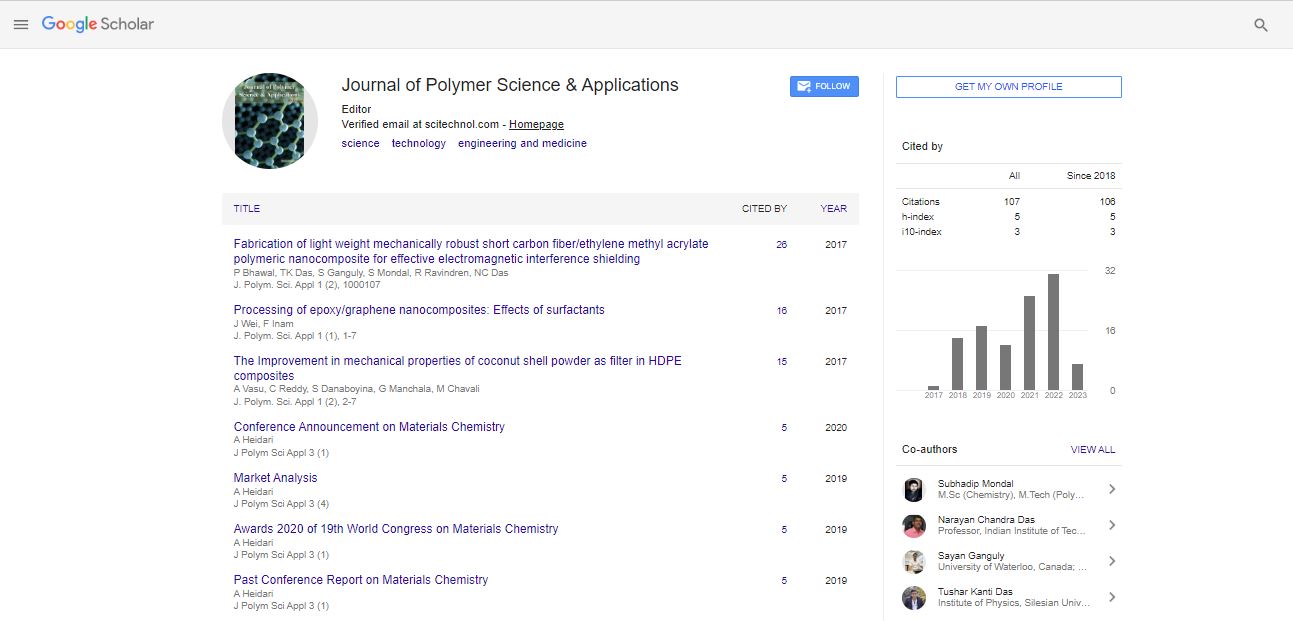Specific functionalized polymer membrane for oriented membrane processes related to the total selective separation of Cr(VI)/Cr(III) aqueous mixtures.
Imane. Mourtah, Z. Habib , Y. Chaouqi , T. Eljaddi, N. Sefiani , L. Lebrun and M. Hlaibi
Equipe Interaction Matiere, Marocco.
Laboratoire Polymeres, France.
: J Polym Sci Appl
Abstract
Our objective is to develop a functionalized polymer membrane (FPM), based on the polymer support polysulfone (PSU) and ethylene diamine tetra acetic acid (EDTA) as extractive agent. The obtained membrane was characterized by the IR spectroscopic technique which shows the fixation of the extractive agent in the polymer matrix. While the SEM technique allowed to characterize the morphology as well as the porosity of the elaborated membrane.
First of all, we checked that the elaborated FPM membrane (PSU-EDTA) is impermeable to Cr(III) ions under our adopted operating conditions. Then the membrane has been adopted to carry out the oriented processes for the total selective separation of the aqueous mixtures [Cr(VI)/Cr(III)], in order to eliminate Cr(VI) ions as highly toxic element, carcinogenic and mutagenic, and to recover Cr(III) ions as an essential element non-toxic for the environment and for fauna and flora.
The studied processes have been quantified, macroscopic parameters, permeability (P) and initial Flux (J0) were determined, as well as specific microscopic parameters, apparent diffusion coefficient (D*) and association constant (Kass), relating to the association of the substrate S with the extractive agent T (EDTA) to form unstable entities (ST) during the diffusion of Cr(VI) ions through the membrane phase. Studies on the influence of several factors, C0 initial concentration of Cr(VI) ions, acidity and temperature of the medium on the evolution of these parameters (J0, P, Kass and D*) were performed. The results show that these factors, especially the temperature, strongly influence the variation of the values of all parameters, as well as the performance of the adopted membrane for the studied processes, and the activation parameters (Ea, ΔH≠ et ΔS≠) have been determined..
The analysis of obtained results indicates a mechanism by successive jumps on fixed sites during the diffusion of the Cr(VI) ions through the membrane organic phase. On the other hand, the results show that the elaborated membrane performance decreases for the extraction of Cr(VI) ions from the mixtures, whereas the process of the total selective separation through this membrane type is more efficient at high temperature.
 Spanish
Spanish  Chinese
Chinese  Russian
Russian  German
German  French
French  Japanese
Japanese  Portuguese
Portuguese  Hindi
Hindi 